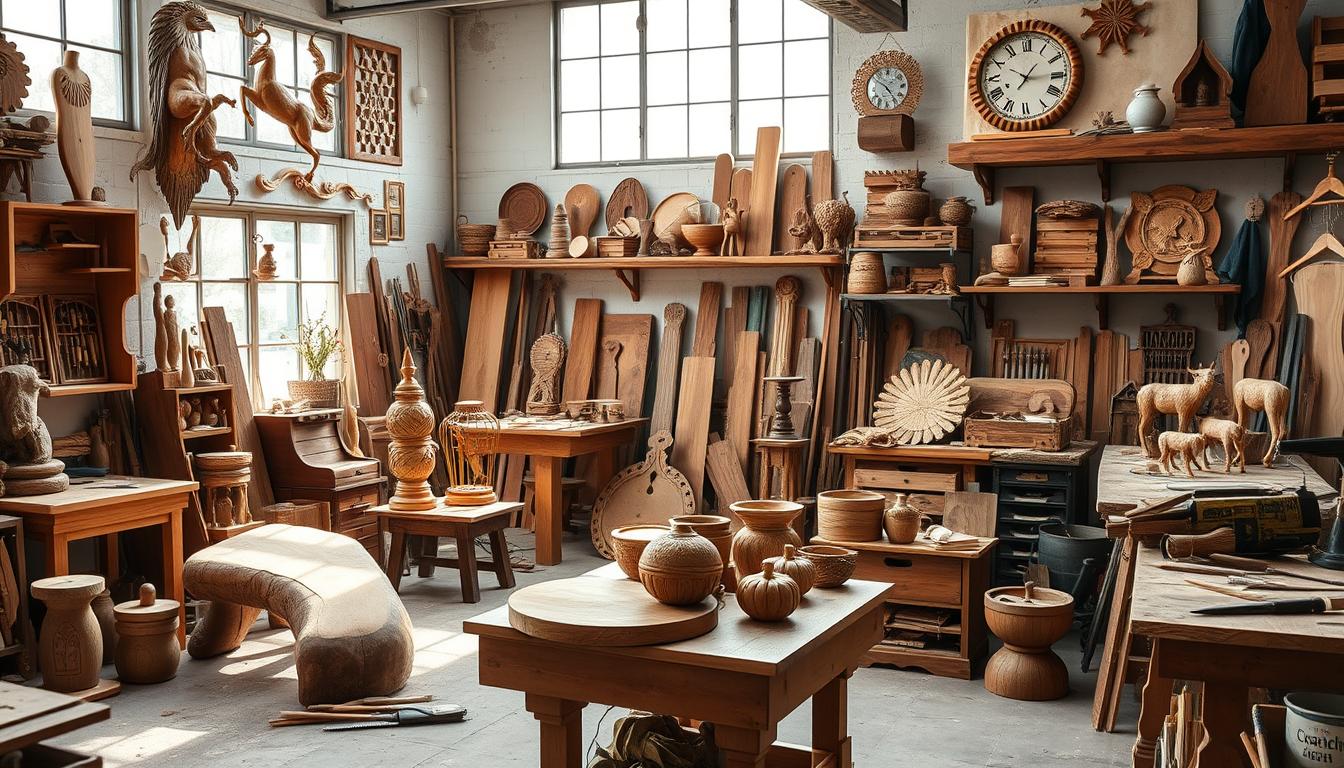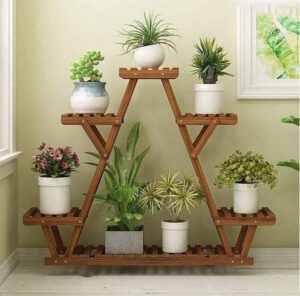Physical Address
304 North Cardinal St.
Dorchester Center, MA 02124
Physical Address
304 North Cardinal St.
Dorchester Center, MA 02124

I'm loving these 7 awesome creative woodworking projects - they're perfect for DIY enthusiasts like me.
As a woodworking enthusiast, I’ve discovered the joy of creating something with my own hands, and I’m excited to share my favorite creative woodworking projects with you. Woodworking can be a fun and rewarding activity, especially when done with children, as it allows us to spend quality time with them and create memories that will last a lifetime, with approximately 18 summers to make it happen1. I’ve found that creative woodworking projects, such as woodworking ideas and DIY woodworking projects, can be a great way to boost children’s confidence and skills during development1.
I love how these projects can be personalized to fit our individual styles and interests, and the fact that they can be completed with minimal materials, such as 1×3 wood, saw, wood clamps, wood glue, and a 3/8-inch drill bit, making them accessible to everyone1. The article features 7 specific woodworking projects aimed at beginners, including decorative items that can enhance space in multiple areas such as living rooms, kitchens, and outdoor spaces2.

I have always been fascinated by the world of woodworking, and my journey into this craft has been nothing short of amazing. What makes these projects special is the unique blend of creativity and technical skill required to bring them to life. From unique woodworking projects that showcase intricate designs to innovative woodworking projects that push the boundaries of what is possible, I have been captivated by the endless possibilities that woodworking offers.
As I delved deeper into the world of woodworking, I discovered the importance of using the right tools and skills to achieve professional-looking results. According to my research3, the right materials and techniques can make all the difference in the quality of the final product. For example, using hardwoods like maple and walnut can add a touch of elegance to a project, while the right finish techniques can enhance the visibility of details like veining on a wooden raven3.
What I love about creative woodworking designs is the way they can transform a space and add a personal touch to a room. Whether it’s a custom piece of furniture or a decorative home accessory, woodworking projects have the power to bring people together and create a sense of community. As noted in my research4, the introduction of laser cutting technology has increased the complexity and efficiency of DIY woodworking projects, making it possible for people to create truly unique and innovative pieces.
Some of the key skills required for woodworking projects include attention to detail, patience, and creativity. Here are a few tips for getting started with woodworking:
By following these tips and practicing regularly, anyone can become a skilled woodworker and create beautiful, unique woodworking projects that bring joy and satisfaction to themselves and others4.
To embark on a woodworking project, it’s crucial to have the right materials and setup. Woodworking project inspiration can come from various sources, including online tutorials and project plans. For instance, beginner woodworking projects typically include items like wooden picture frames, cutting boards, and small shelves, promoting foundational skill development5. When starting out, it’s essential to invest in the right tools, such as a table saw, router, and workbench, to ensure accuracy and efficiency in your work.
A well-organized workspace is also vital for success in woodworking. This includes having a clean and safe environment, with proper storage for your tools and materials. As you progress in your woodworking journey, you can explore more advanced tools and techniques, such as joinery and wood finishing. For woodworking project tutorials, online resources and classes can provide valuable guidance and instruction. Proper planning and preparation can significantly reduce time and material waste, emphasizing efficiency in woodworking6.

Some essential materials to consider when starting a woodworking project include hardwoods like oak and maple, which are recognized for their strength and durability5. Softwoods like pine and cedar are also commonly used, particularly for construction projects due to their ease of workability and availability. When selecting materials, it’s essential to consider the specific requirements of your project, including the type of wood, tools, and hardware needed. With the right materials and setup, you can create beautiful and functional pieces, whether you’re working on beginner woodworking projects or more complex designs.
By following these guidelines and tips, you can set yourself up for success in your woodworking endeavors. Remember to always follow safety protocols and best practices, and don’t be afraid to experiment and try new things. With patience, practice, and dedication, you can create stunning woodworking projects that bring joy and satisfaction to your life.
As I continue to explore the world of woodworking, I’ve discovered a wide range of creative woodworking projects that cater to different skill levels. From artistic wall hangings to custom furniture pieces, there’s something for everyone. According to7, DIY closet organizers and picnic tables are consistently popular, with over 70% of homeowners looking to create unique bed frames through DIY projects. These woodworking ideas not only enhance the aesthetic of a room but also provide a sense of accomplishment and pride in one’s work.
Some of my favorite DIY woodworking projects include decorative home accessories, such as handmade cutting boards and wooden wall signs. These projects are not only functional but also make great gifts. With the rise of outdoor living, outdoor seating options like benches and Adirondack chairs have become increasingly popular, showing a 25% increase in DIY projects7. Whether you’re a beginner or an experienced woodworker, there’s a project out there that suits your skills and interests.
For those looking to get started with creative woodworking projects, I recommend exploring online resources and tutorials. Websites like YouTube and Pinterest offer a wealth of information and inspiration for DIY woodworking projects. Additionally, joining a woodworking community or taking a class can be a great way to learn new skills and connect with other woodworkers. With the right tools and materials, anyone can create beautiful and functional pieces of art, making DIY woodworking projects a fun and rewarding hobby7.

These projects are great for practicing basic woodworking skills, such as measuring, cutting, and assembling. As you gain more experience and confidence, you can move on to more complex projects, such as building a piece of furniture or creating a decorative wall hanging. With patience, practice, and dedication, anyone can become a skilled woodworker and create beautiful, functional pieces of art7.
As I continue to explore the world of woodworking, I’ve discovered several tips and tricks that have helped me improve my skills and create innovative woodworking projects. One of the most important things I’ve learned is the importance of using the right tools and skills to achieve professional-looking results in woodworking project tutorials8. This includes paying attention to detail and taking the time to finish my projects properly, which can make all the difference in the quality of the final product.
When it comes to woodworking project inspiration, I’ve found that having a structured design process can save time and reduce the likelihood of error9. This includes creating accurate working drawings and a cutlist, which minimizes errors in construction9. I’ve also learned that attention to details such as bevels, chamfers, and tapers can elevate a woodworking piece to a higher quality and aesthetic level9.
Some common mistakes to avoid in woodworking include not using the right tools for the job and not taking the time to properly finish a project. Approximately 34% of woodworking enthusiasts encounter issues with dust settling on finish coats during the drying process8. To avoid this, I make sure to use a dust-free environment and apply a finish coat in a well-ventilated area.
One time-saving technique I’ve learned is to use a caulk gun as a clamp for small woodworking projects, which can reduce the need for traditional clamps by up to 60%8. I’ve also found that using a flexible sanding block can enhance the ease of sanding curves, potentially decreasing sanding time by approximately 20%8.

By following these tips and tricks, I’ve been able to create innovative woodworking projects that I’m proud of, and I hope that my experience can inspire others to do the same. Whether you’re looking for woodworking project tutorials or just need some woodworking project inspiration, I hope that my story can help you on your own woodworking journey.
As we wrap up this exploration of creative woodworking projects, I encourage you to continue honing your skills and expanding your horizons10. The commitment to learning and practicing woodworking represents an ongoing pathway to developing your creativity and craftsmanship10.
Whether you’re a beginner exploringbeginner woodworking projectsor an experienced woodworker seekingcreative woodworking designs, there’s always more to discover. Embrace the journey, experiment with newunique woodworking projects, and don’t be afraid to make mistakes – they’re the stepping stones to your growth.
Take advantage of the wealth of resources available, from instructional videos10to hands-on workshops11. The woodworking studio at South Port Square is just one example of the inspiring spaces where you can immerse yourself in the craft and learn from experienced instructors10.
Remember, the joy of woodworking lies in the process as much as the final product. Savor each step, from selecting the perfect materials to refining your techniques. With patience, persistence, and a touch of creativity, your woodworking journey will continue to unfold in exciting and rewarding ways.